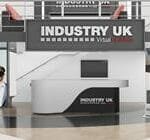While leaving the European Union may present a range of opportunities to UK food manufacturers, the stakes are becoming increasingly real with less than 12 months now remaining before Brexit really kicks off. David Jahn, director at automation specialist Brillopak examines the implications on labour and how realistic it might be for a food factory to see a return on their robot packing and case loading investment before March 29, 2019.
The report issued by the Migration Advisory Committee in March[i] indicates that UK employers remain “fearful” about what a future migration system will be like after Britain leaves the EU.
“No one can say for sure how many fresh food packing operations remain utterly dependent on international labour, but it’s high,” notes David. According to the MAC report, food & beverage manufacturing accounts for the highest share of EEA migrant employment (24.3%), followed by warehousing (18.5%).
Several fresh food respondents also emphasised how consumer shoppers will suffer from higher food prices if the availability of labour is curtailed, stating that employers will be competing more for staff, leading to higher wages, and therefore an increase to production costs.
Automating manual tasks like case loading and palletising has long been argued as a solution to labour shortages and increased productivity. Yet, for the uninitiated who are facing an uncertain future, pinning down the return on investment is understandably a deal breaker.
Stressing that ROI is not purely about labour savings, David highlights that the impending Brexit deadline provides an opportunity for UK packing operations to get back to basics and review the entire productivity picture in the context of long-term strategies. “If and when we do leave the EU, the strongest food manufacturing plants and packhouses will survive. However, the business rationale for automation needs to look beyond the short term goal of survival post-Brexit.”
He continues: “If the recession that economists are foretelling happens or if Brexit turns out to be a disaster, food costs will inevitably rise. Those with the foresight to invest in automation, especially marginal businesses like packhouses, will be more able to absorb production and wage increases, potentially opening their company up to new contract opportunities. Equally, if Brexit is a success, then these businesses will be optimised for future growth.”
Tips to optimise payback
ROI on any automated manufacturing line is dependent on the application and level of innovation involved. Brillopak suggests that between one and three years is realistic, after which the positive cash flow over the entire service life of the automated system is essentially profit.
Whether you are upgrading a line or automating a manual process for the first time, David shares the main merits of robots and several practical tips to get food and drink packhouses thinking beyond the immediate EU labour crisis:
- Flexibility to scale your business up, down and sideways according to demands
Automated systems enable food businesses to react faster to the spikes and troughs in demand. This can allow a packhouse to accommodate seasonal demands, scale up when required, and flex to different retailer SKUs and presentation requirements, increasing the potential to tender for potentially lucrative contracts or enter new distribution markets. Additionally, automation needs to provide flexibility to handle what we know today, as well as adapting to what may happen in the future.
- Production lines that look efficient become efficient
Chaotic layouts, factory clutter and workforce hostility towards automation are probably the most common reasons behind short line stops, which in turn impacts productivity. Flexible robot mounting configurations can lead to significant floor footprint savings. Even semi-automated systems, like Brillopak’s C130 packstation, forces greater rigour, resulting in tidier, uncluttered walkways and faster line speeds. In addition, by removing personnel from hazardous or repetitive tasks and moving them to value-added jobs, worker safety is improved.
- Benefit from real time reliability
Human operatives are prone to making mistakes, especially when tiredness or boredom kicks in, whereas robots perform repetitive tasks faster, with more precision, 24/7 if need be, without breaks, holidays, sickness or injury. They are also able to ensure consistency of throughput, quality and presentation over a shift, improving line performance and reducing waste and error rates.
- Improved warehouse efficiency
Another way to improve efficiency is to reduce the volume of stock and/or labour overheads in the warehouse and cut delivery lead times. For example Brillopak is currently working with partners to identify ways to pack, palletise and then deliver product straight to the warehouse for instant loading using Autonomous Intelligent Vehicles (AIVs).
- Prepare for greater predictability
A key challenge for any customer is factoring in the future requirements of retailers, typically supermarkets. Today’s automated systems can assist with scheduling by capturing data that makes production planning more efficient and less reactive.
- Maintain consumer trust with the very best traceability technology
Understanding exactly where and how a product was farmed or grown; from the exact field; on which date; where it was packed on which machines and how and when it arrived at the shop, not only ensures that every element of the process is effectively managed, but also means that the data acquired through the process can be used to immediately track any health issues down to a local or batch issue. In addition to being integral to traceability and trust, data can also result in better supply chain management, more efficient stock control, better asset care and increased productivity.
- Think long term OEE
It’s a fact – machines break down. However, plant that’s poorly maintained will likely breakdown more frequently and impact quality, as well as productivity and Overall Equipment Effectiveness (OEE). When determining your ROI, may sure you account for maintenance and wear and tear, plus invest in a robust service contract. Breaking the cycle of reacting to emergency maintenance tasks starts with upskilling your workforce and making them your automation champions. The ultimate measure of OEE is how quickly and efficiently a fault is fixed. Brillopak’s pick and pack systems offer simple HIM instructions that pinpoint exactly where a fault on the line has occurred, thus avoiding multiple time consuming steps. All too often purchasing decisions are based on the initial cost rather than factoring the likely annual cost including efficiency over the effective lifetime of the machine.
- Avoid cutting corners to save a few quid
Investing in automation equipment is a big outlay. Its purpose isn’t just to make labour savings but build on efficiency. Invest time making sure your system is specified to cover all eventualities, or at least be aware of how they will be managed post automation. Be wary of any sacrifice to quality of presentation or quality of product, as this will just undermine all of your brand building efforts.
- Free up manual labour for more value added tasks
By deploying end of line automation to replace manual or mechanical processes, your workforce can be reallocated to perform more meaningful and productive business tasks, including asset care. Getting staff involved in the commissioning and ensuring they are trained properly can result in less robot resistance. Jobs also become less pressurised and more fulfilling.
David concludes: “Brexit is presenting UK food businesses with an exciting opportunity to get back to the basics and do what we do best. The migrant labour argument looks set to rattle on for months to come. Yet, if food packhouses don’t act now and examine how automation can make them more cost competitive and productive, they may not have a sustainability business in 12 months when we leave the EU. By that stage, lack of labour effectively becomes a moot point!”


Today’s automated systems can assist with scheduling by capturing data that makes production planning more efficient and less reactive.

Automating manual tasks such as case loading is a solution to labour shortages and increased productivity






